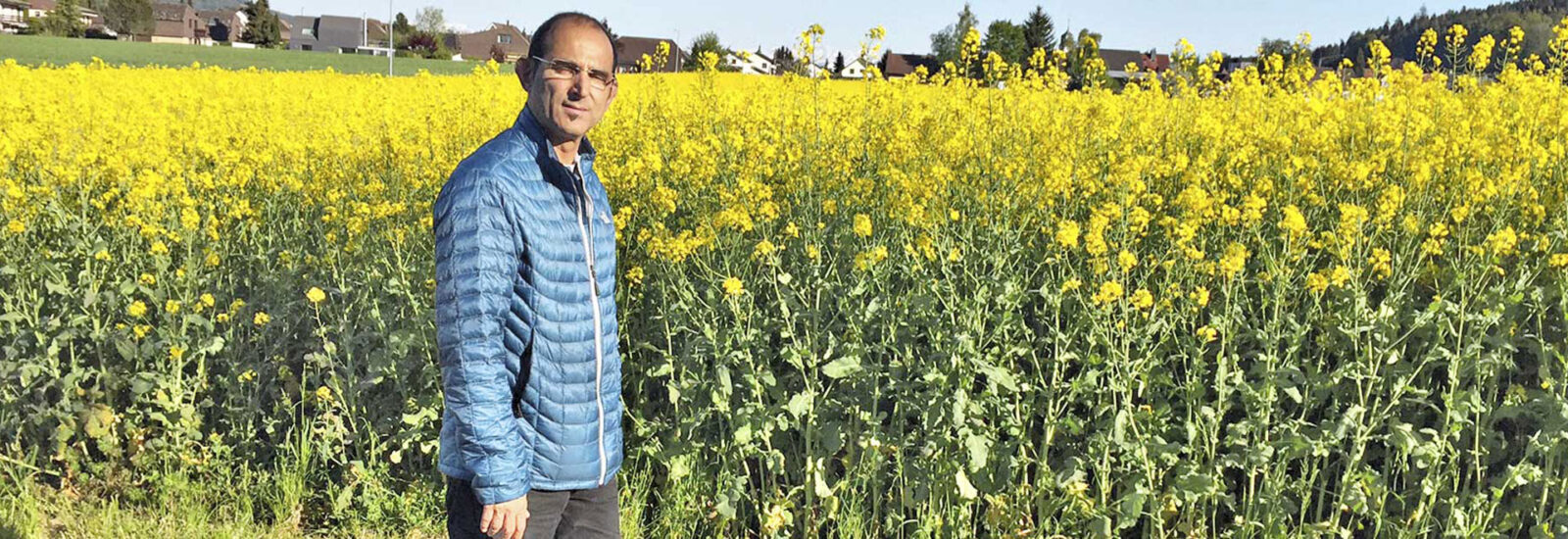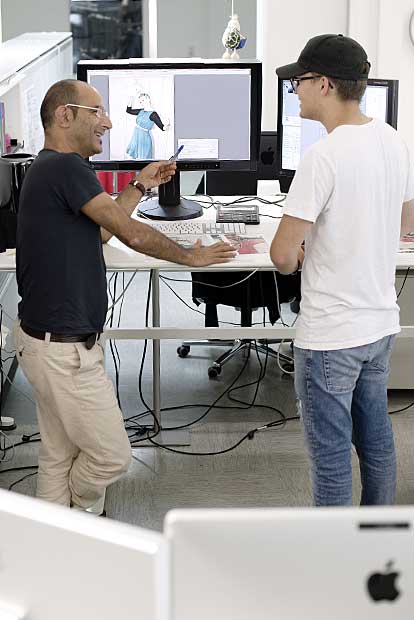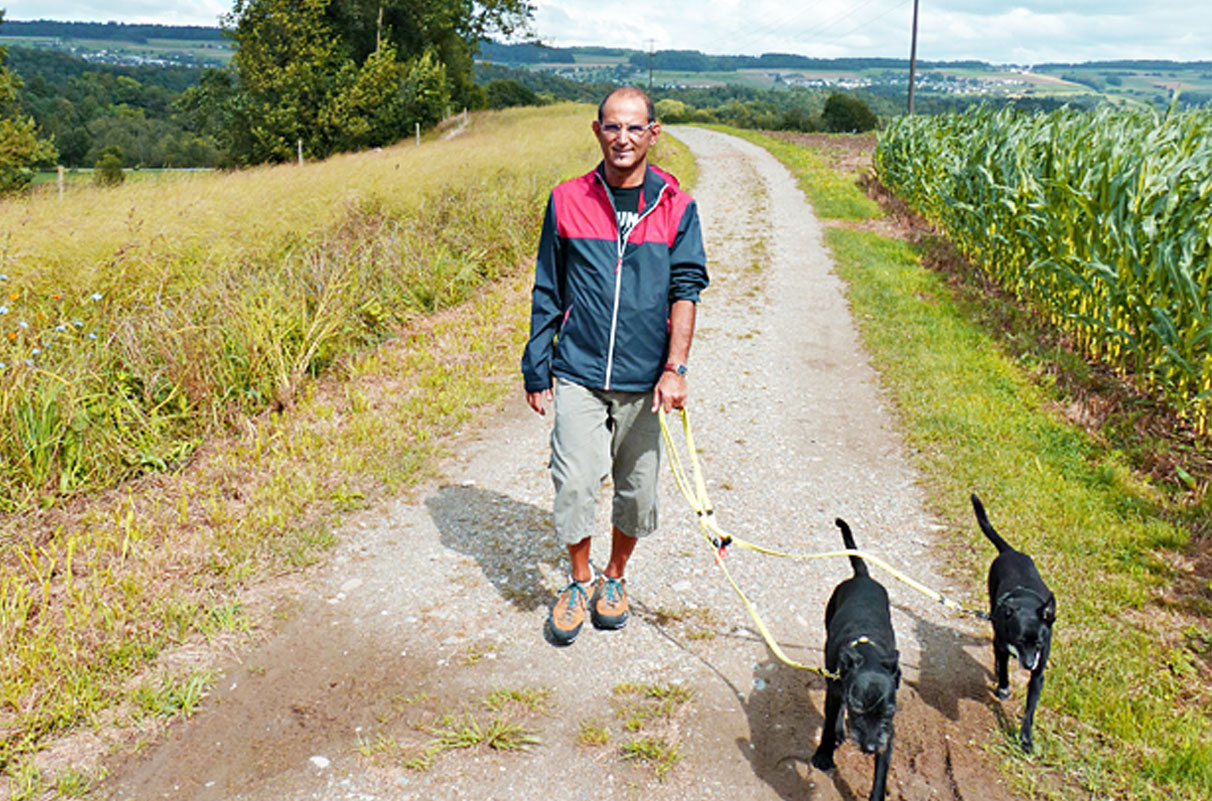
A good picture is one that is so good that the price becomes irrelevant
People nowadays always talk about price first, and simply thinking they’re getting a bargain often makes an offer seem desirable. As some studies have shown, this is faulty thinking. People are willing to pay higher prices for any products that present themselves as being of superior quality to others. This is not just true for luxury goods, it applies to everyday consumer goods and basic foods as well. The decisive factor for a product’s presentation is what people perceive first – and this occurs via the eyes, the image we form of the product. If the picture gets someone’s attention, the product’s price quickly becomes irrelevant.
Interview with Rodolfo Zanzot in 2016, Team Leader Image Editing at n c ag, Urdorf – Thomas Gysin
Rodolfo Zanzot says he’s very meticulous about his work. Always striving for perfect results, he’s not pleased with a job unless the customer tells him it’s exactly the way they wanted it. The route to achieving this is never easy; the first 60 to 70% of what’s possible with image processing is relatively easy to do, but each additional 10% requires twice the effort. Only the premier league image editors can attain 90%.
Working with images is made comparatively easy today with the many tools available, and software developed for professionals is available to everyone. But using the programs and knowing how the various work processes interact has to be learned. And even with years of experience, you need to keep up with things so that you can understand the continuous updates. It’s like elite-level professional sports: without daily training, you instantly lose ground on the front runners, he says.
When you see a good picture, you can’t look away, and when it’s very good, it’s unforgettable.
A picture has enormous potential, with the power to stimulate the senses or to deceive and even manipulate them. This potential therefore requires very subtle handling. Any exaggerating will achieve the opposite. An image like this is no longer credible, it is no longer an image, the message is devalued and, in the worst case, useless forever.
People expect a picture to depict the truth. Only authentic images work. For example, if a woman in an ad image is doctored so much that she ends up looking like a Barbie, then you’ve blown it and the product she’s advertising lacks credibility. A model needs to show natural skin tones, look healthy, with proportions right in every detail, the model must be alive, and yes, when you look at the picture you should have the feeling that you can feel the model breathing … That’s how the woman in the picture must be, because then she is desirable, and so is the product she is advertising. With a picture like this, you can’t look away; this kind of image stays in your mind, in the best case it’s unforgettable.
[twenty20 img1=”1989″ img2=”1987″ direction=”horizontal” offset=”0.5″ align=”right” width=”100%” before=”Before” after=”After”]
Change existing image to winter mood
The highest level of image composition: when a half-dozen images must become one
For Rodolfo Zanzot, it’s always a new challenge: to create an image from elements of the widest array of image files and turn them into a completely new image – a very individual, new image, a real image! Photo editors are judged by the quality of this work, he says. Because observant viewers very quickly recognize many of these images as compositions. Such images can then not be used professionally. Were they even perceived as “fakes”, they would appear cheap at best, and in the worst case would do damage, for example, to the image of the customer, or of the product that was supposed to be presented and sold looking its best in the picture.
When an Asian national becomes Swiss, and a showroom becomes a mountain pass
Sometimes the wish list for a complex job doesn’t even fit on one page, laughs Rodolfo Zanzot. When a job like that lands on his desk, he has to plan the workflow in great detail in advance. It’s quite common, he says, especially with car customers, that good pictures are gathered from all over the world, but the cars depicted do not match the models available on the Swiss market. So a right-hand drive model might get changed to a left-hand drive one in the image editing process. If the customer wants several models from different files combined on one image, the incidence of light and the shadows cast by the individual subjects won’t match, and the editor has to start from scratch.

The images have to be split into individual elements beforehand and then reassembled and copied into the newly created setting. The low- or high-angle shots of the individual objects must harmonize in the new image; reflections or clear views through windows must be adapted to the new setting; a dead car body surface is transformed into a living one through highly detailed work, and cars that might be parked are transformed into moving ones; people in and outside vehicles are copied from other files and inserted as though they had been photographed live at a photo shoot in the new location. Finally, the interplay of light and shadow has to be perfectly matched. This is where you can see the quality of image editing. Not all light is the same, nor are all shadows. According to Rodolfo Zanzot, creating a perfect shadow actually requires years of experience. When composing a multidimensional puzzle of this kind, he says, it’s useful if an image editor also has a sound knowledge of photography, retouching, lithography and graphics. The purpose of this kind of picture is, after all, to sell the cars. And to do that, the work has to be so good that even a professional would think the composition was a single image. And, he adds, images like this are only truly perfect when only IT forensic experts can prove in detail that the image has been edited.
Future-aligned thinking: nurturing young professionals

When it comes to training the younger generation, many companies struggle. At n c ag, this area is given a completely different emphasis. They know that well-trained staff are the assets of any company. There are always good image editors on the market, but exceptional ones are rare. Rodolfo Zanzot believes one-dimensional training is not enough; he is currently training three apprentices at the same time. n c ag is the ideal place to develop talent, he says, as the company provides an insight into every angle of the workflow, from photography, graphics and lithography to print products and digital distribution for all online media.

Rodolfo Zanzot, Image Editing, DTP
Rodolfo Zanzot actually did his apprenticeship as a process engraver at n c ag. So, he’s familiar with all the original work processes from the analog era. He’s since seen digitalization evolve from its beginnings, with all the highly complex changes and opportunities that come with it. His career also saw him gain valuable experience in related professions, though he has been back at n c ag now for the past eleven years, and is now team leader in charge of image editing. Rodolfo Zanzot is father to four children, a family man through and through, loves la vita italiana, good soccer, lives in Mellingen on the Reuss river, and enjoys relaxing walks there with his dogs.
